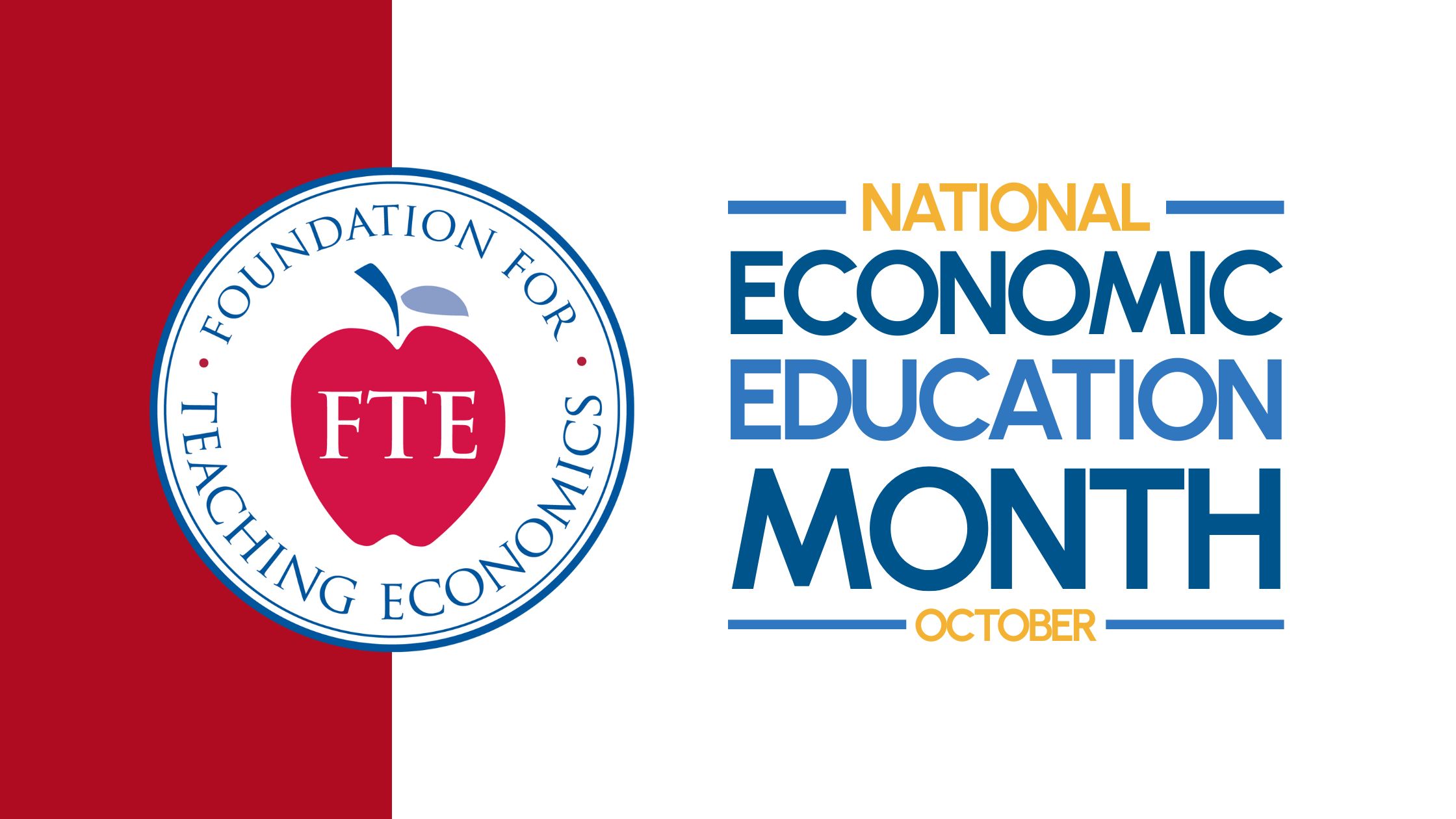The Magic of Markets – Trade Creates Wealth
- >
- Teachers
- >
- Teacher Resources
- >
- Lesson Plans
- >
- Economics for Leaders
- >
- The Magic of Markets – T…
Download Magic of Markets Guide
Overview:
Trade is the voluntary exchange of goods and services. People engaging in trade must be willing to bear a cost (give up something). Therefore, we know that people will only participate voluntarily when they expect to gain from the exchange. If even one of the trading partners believes he cannot gain, the exchange will not take place.
Video Demonstration:
Concepts:
- Trade
- Voluntary exchange
- Costs
- Benefits
- Property Rights
Content Standards:
Standard 5: Voluntary Exchange – Voluntary exchange occurs only when all participating parties expect to gain. This is true for trade among individuals or organizations within a nation, and among individuals or organizations in different nations.
- Exchange is trading goods and services with people for other goods and services or money.
- People voluntarily exchange goods and services because they expect to be better off after the exchange.
- When people buy something, they value it more than it costs them; when people sell something, they value it less than the payment they receive.
Lesson Description:
This lesson involves students in a trading simulation designed to illustrate a complex marketplace in which goods and services are traded. Students use this experience to investigate the conditions that encourage or discourage trade among individuals.
Time:
- One class period.
Materials:
A large number of small, easy to exchange items – such as miniature candy bars, small boxes of raisins, inexpensive small toys, packages of sticky notes, pencils, stickers, library passes, hall passes, answers to a quiz, etc., and enough small brown bags for each student.
Procedure:
- Before beginning the simulation, place the trading articles, unequally, in brown paper bags and seal them. Divide the bags into groups of about 5 or 6, depending on class size, and mark all bags in each group with the same colored dot or letter. Mix all the bags together in a large box or trash bag.
- Explain to students that today they have an opportunity to participate in a trading activity. The purpose of the activity is to explore why people trade.
- Ask, “Why do people trade?” Record some student responses on the board and indicate that these responses are hypotheses. Explain to the class that today’s activity will provide information and experience with which to test the hypotheses.
- Describe the following situation to the class. Imagine that a teenage music lover walks into a music store, picks out the latest CD by his favorite artist and pays the owner $18. Who gained and who lost in this transaction?
- (Both people gained in the trade. The music lover gave up something of lesser value, $18, to get something of more value, the CD. The owner gave up something of lesser value, the CD, to get something of more value, $18. Both the music lover and owner ended up with something of more value to them. Hence, they both gain.)
- Announce to students that you are going to give them bags, which they will then own, and ask them not to open the bags until told to do so. Randomly distribute the bags and emphasize” “Whatever is in the bag is yours.”
- Ask students to open their bags and look at the object WITHOUT removing it from the bag or showing it to anyone else. Direct students to rate their satisfaction with the bags using a show of hands and a 1-5 rating system in which 5 is high and 1 is low. (Ask for a show of hands for each rating – 1, 2, 3, etc., and record tally on the board or overhead transparency. Caution: Ensure that every student votes in each round.)
- Tell students they may now take the objects out of the bags. Direct them to move to designated locations around the room according to the symbol (or color) on their bags. Remind students that “whatever is in the bag is yours,” and that they may trade or not, open the package or not, trade parts or all or nothing. After several minutes, direct students to return to their seats. Repeat the 1-5 evaluation by show of hands, reminding students to rate what they now have in their possession, and reminding them that they must rate their bags again whether they traded or not. (Note that students may change their ratings even if they don’t trade. Be sure that every student votes, even if he hasn’t traded or changed his satisfaction rating. Record the tally on the board with a different colored marker than the first tally.)
- Conduct one or more additional trading rounds, combining groups, etc. with the last round involving all class members. In each successive round, increase the size of the trading area by combining groups. (For example, blues and greens may trade, yellows and reds may trade, etc.) In the last round allow students to trade with anyone in the class. Do a “satisfaction” rating after each round and record the tally.
- While the students are trading, or after all trading is completed, calculate the total “satisfaction points” for each round. Record the total below each tally.
Debriefing Questions:
(See suggested answers in teacher guide included in download linked above.)
- How many people made trades?
- Ask several traders what they traded and why.
- Follow the students’ explanations by asking how they felt after the trade.
- Find the student who was the other party to the exchange and ask why he/she traded and how he/she felt after the trade.
- Go back to some of the students who discussed their trades in response to question #1 and ask what it cost to make the exchange.
- Did anyone trade more than once? Why? Did anyone not trade? Why?
- Point to the tally of satisfaction points on the board as empirical evidence of “increased wealth.”
- How did wealth increase when nothing new was added?
- What generalizations might we make about trade based on how the tally changed from round to round?
- Why do people trade?
- Did trading behavior confirm or contradict the hypotheses we listed at the beginning of the activity?
- Was it possible to trade without bearing a cost? Why?
- What was the cost and what was the benefit of each trade?
- What were the necessary conditions for wealth-creating trade to take place?
- What would have happened if you had been forced to trade?
- Does the creation of wealth make everyone happy?
- If we were to observe twenty people buying items at an outdoor Farmers market, what could we conclude about their gains and losses? Their wealth?
The Magic Of Markets combines procedures used in “Why Do People Trade,” Master Curriculum Guide In Economics International Trade, by Donald R. Wentworth and Kenneth E. Leonard (Copyright 1988 by the National Council on Economic Education, 1140 Avenue of the Americas, New York, NY 10036. All rights reserved. No part of the Master Curriculum Guide In Economics International Trade materials may be kept in an information storage or retrieval system, transmitted, or reproduced in any form or by any means without permission in writing from the National Council. Used with permission.) Questioning strategies and procedures developed by Kathy Ratté and Kenneth Leonard for the Foundation for Teaching Economics.
- Lesson 1: Economic Growth and Scarcity
- Lesson 2: Opportunity Cost and Incentives
- Lesson 3: Open Markets
- Lesson 4: Markets in Action
- Lesson 5: Labor Markets
- Lesson 6: Incentives, Innovations, and Roles of Institutions
- Lesson 7: Property Rights: Is the Environment Different?
- Lesson 8: Setting the Rules: Costs and Benefits of Government Action
- Lesson 9: Money and Inflation
- Lesson 10: International Markets
- The Magic of Markets – Trade Creates Wealth
- In the Chips — A Market in Computer Chips
- The Job Jungle: A Labor Market Game*
- Cartels and Competition
- The Wheat Activity
- The Fish Game
- Farmers and Fishers
- A Pollution Solution
- Foreign Currency and Foreign Exchange

Aditi Gandhi: Economics for Leaders Virtual Program Alumni
Aditi sat at her desk in Dubai, staring at her computer screen, her fingers hovering over the mouse. The decision…

October is National Economic Education Month. We need it more than ever.
The Washington Examiner By Ted Tucker October 2, 2025 A fundamental economic principle is that voluntary trade creates wealth, and the…

FTE: Celebrating 50 Years of Excellence in Economic Education
2025 is a special year for the Foundation for Teaching Economics (FTE), as we celebrate our 50th anniversary. In 1975,…
